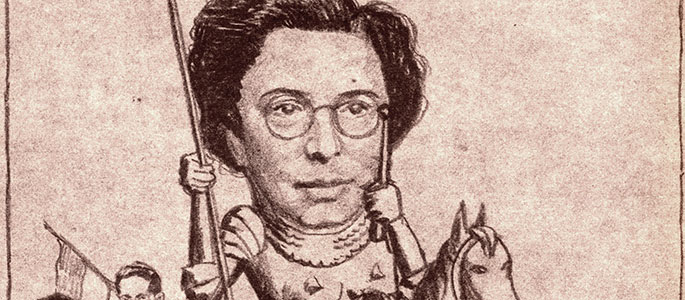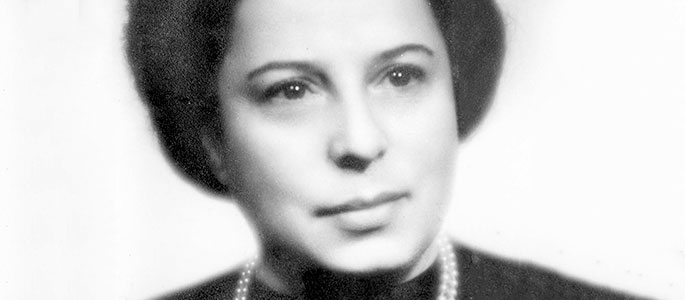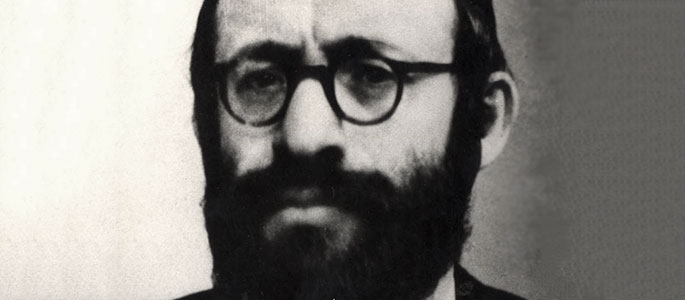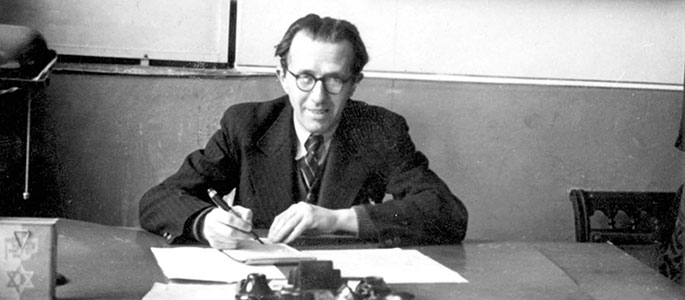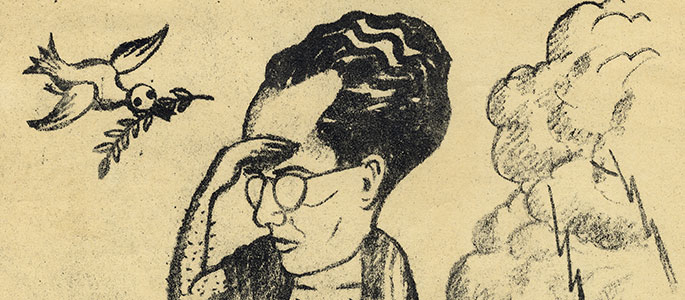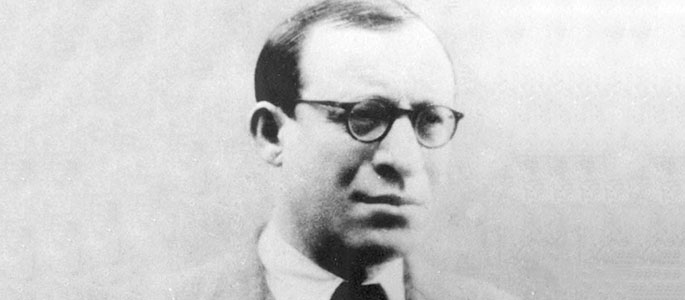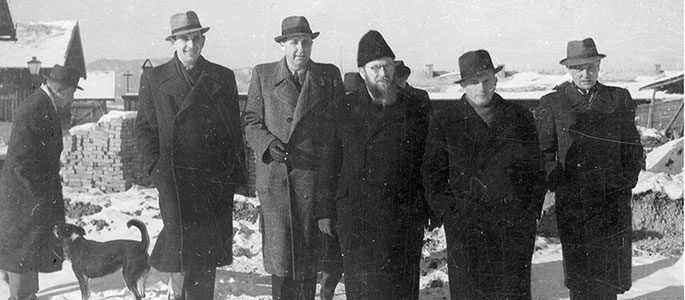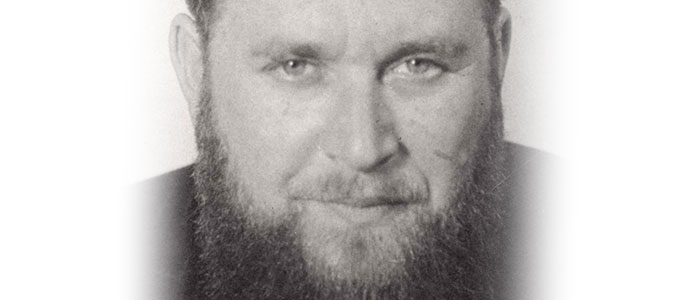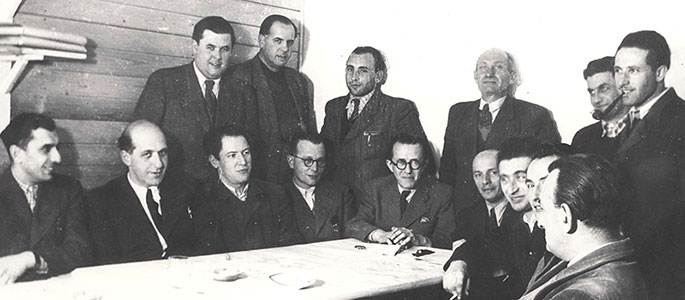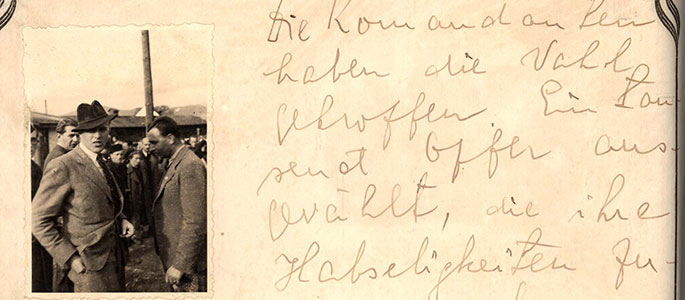Bratislava During the Holocaust
The Working Group
6 September 1943
Fate has willed us apart… Yet the same fate has also willed that during the years of our people’s greatest misery, your mother is fulfilling a great mission in order to ease this terrible suffering. If I survive this difficult period, I think I will be able to say that I have not lived in vain. In this spirit you must bear this separation. The suffering of the People of Israel stands above any personal pain.
Gisi Fleischmann, in a letter to her daughter Aliza (Lizi), in Eretz Israel
In the summer of 1941 an underground organization of public figures formed in Bratislava; it became known as the ‘Bratislava Working Group’. This group originated in response to the policies of the head of the Jewish Center (Ústredna Židov or ÚŽ), Arpad Sebestyen, who unhesitatingly obeyed the Slovakian authorities.
View their Story
In the spring of 1942 the Working Group attempted to bring about the cessation of deportations from Slovakia to Poland. The group members were of different ideological and religious persuasions, and included Zionists, Orthodox, and assimilated members. Gisi Fleischmann and Rabbi Michael Dov Weissmandel were the leaders of the group. They worked together with Andrew (Ondrej) Steiner, Tibor Kovacs, Oskar Neumann, and Rabbi Abba Frieder. They were supported by a larger group of public figures and activists in the various youth movements.
In their attempt to halt the deportations, members of the group bribed key figures in the Slovakian regime and the German embassy. In the summer of 1942 members of the group entered negotiations with Dieter Wislieceny, Eichmann’s representative in Slovakia, whom they provided with large monetary bribes. Their initial contact to Wislieceny was through Karl Hochberg, a Jewish traitor who was put in charge of the department for special affairs at the Jewish Center. Most members of the Working Group believed that in the summer and autumn of 1942 they had succeeded in putting a stop to the deportations from Slovakia, thanks to the bribes they paid to Wislieceny and the Slovakians. In fact, however, the deportations from Slovakia had been brought to a halt for a variety of reasons: bribes paid to Fascist leaders of Slovakia; the intervention of the Minster of Education, Jozef Sivak, and the Governor of the Slovakian National Bank, Imrich Karvas – neither of whom were bribed; and pressure from the Vatican and local bishops, who did not take kindly to the fact that the president of Slovakia, the Catholic priest Jozef Tiso, was involved in the deportation of Jews.
The temporary halt affected in the deportations convinced the members of the Working Group of the effectivity of bribery in dealing with the Nazi authorities. Following this, Rabbi Weissmandel initiated the Europa Plan – an ill-fated attempt to save all the Jews in Europe by paying ransom. The group members trusted Wislieceny and believed that if world Jewry could come up with the money, the deportations would in fact cease. Protracted negotiations between members of the group and figures in the SS were undertaken, beginning in November 1942 and lasting until August of 1943. During this time members of the group established contact with Jewish organizations in Europe, as well as with Zionist representatives in Istanbul, attempting to enlist their agreement to the plan, and their help in raising the necessary monetary sum. However, the negotiations with the Germans ended without any result. After the fact it became apparent that these negotiations had been yet another deceitful tactic employed by the SS.
The members of the Working Group were also involved in the creation of the forced labor camps in Slovakia – Sered, Nováky and Vyhne. The initiative undertaken by Andrew (Ondrej) Steiner and Oskar Neumann was meant to convince the authorities of the necessity of Jews to the Slovakian economy. In addition, the Working Group dealt with encouraging Slovakian Jews to escape to Hungary, until March of 1944 when Hungary was occupied, as well as in the reception of Jewish refugees from Poland.
Despite their disappointment with the failure of the Europa Plan, the members of the Working Group never ceased in their efforts to save Jews. Information about the murderous undertakings going on in Poland motivated members of the group to investigate the fate of the deportees, and attempt to aid refugees from Poland by finding them hiding places and providing them with false identification papers. At the same time, the members of the group did what they could to spread the information about the mass murder of Jews, hopping to interfere with the expected deportation of the Hungarian Jews.
One of the first actions undertaken by the Working Group was sending agents to follow the deportees to eastern Poland, to document their fate. Although they emphasized hunger as the main cause of death, these agents had already reported an extremely high death rate among the deportees in July 1942. The Working Group conveyed this information to its contacts in the West. In October 1942 information was received regarding the disappearance of Jews who had been deported; once again agents were sent out to verify the matter. In November the agents returned, bearing with them reports on the murders at Belzec and Treblinka. From this point, the Working Group conveyed information on the murders, primarily as part of the petitions aimed at foreign powers in the attempt to save Jews. Rabbi Weissmandel succeeded in sending a synopsis of the Auschwitz Protocols to Isaac Sternbuch in Switzerland by telegram; Weissmandel requested that the camp and the railway lines leading to it be bombed. Ultimately the efforts of the Working Group failed, some of them were arrested, and toward the end of 1944 their leaders, Gisi Fleischmann and Rabbi Weissmandel, were deported. Weissmandel succeeded in jumping from the deportation train. Gisi Fleischmann was murdered in Auschwitz.
Government of the Federal Republic of Germany
